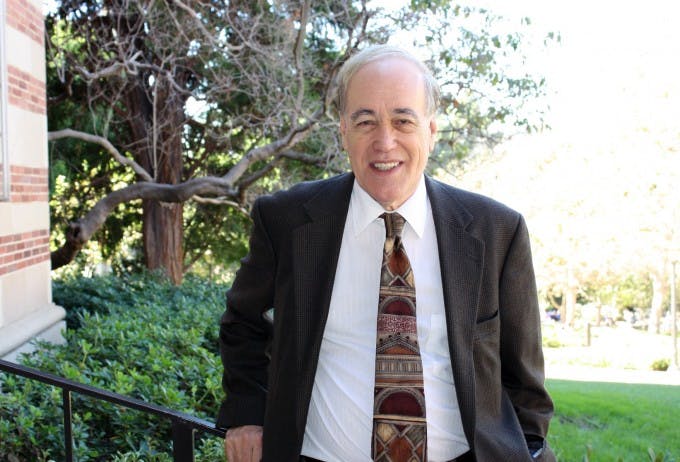Gary Orfield’s latest book “The Resegregation of Suburban Schools: A Hidden Crisis in American Education” (Frankenberg, Erica, co-ed.; Cambridge: Harvard Education Press, 2012. Print.) examines an issue in American society that many have thought was solved with the victories of the Civil Rights Movement.
“What is happening with suburban schools today in many areas is like what happened to urban schools in the 1950s and 1960s,” says Orfield. “No effort is being made to create stable, lasting integration. Families of color are moving in and a lot of whites are moving out. And since all the population growth in the country is non-white, and since the West and the South are already predominantly non-white in school enrollment, this is going to continue.”
Orfield says that while many families of color have the means to live in middle to upper-middle class areas, housing discrimination still exists. Current data shows that when two different sets of homebuyers – one white and one non-white – report similar incomes and housing desires, they are often sent to different communities by realtors to look for homes. Homebuyers of color usually get listings only in nonwhite and changing communities.
“When suburbia really started booming, it became a very profitable exit for white people from the cities,” says Orfield. “You’d get a small home for very little money down, often with federally guaranteed loans, and it increased greatly in value. As the suburban boom took hold, developers rarely sold to Blacks or Latinos. Now, with fair housing in operation, you see this huge movement in the L.A. area of middle-class Black and Latino families out to the Inland Empire, and to other communities that have now been devastated by predatory lending and the foreclosure crisis.”
Orfield points out that resegregation by race usually leads to further segregation by income, which has far-reaching effects on the quality of housing, local economy, and ultimately, the quality of education.
“The communities experience disinvestment, loss of job base, a decline in their housing market, and schools that are deeply disadvantaged,” he says. “And of course, these schools tend to become much less competitive and much less strong as the path to college.”
Orfield underscores the deficiencies in resegregated, high-poverty schools and the end result for students living in those communities who do not have access to special support like remediation classes.
“These are the schools that are the dropout factories,” he notes. “These schools don’t have AP courses and have low levels of competition, with no pre-collegiate courses where students acquire necessary pre-collegiate skills. You tend to get a very unequal preparation for college.
“If you’re in a middle-class school where everybody’s going to college and the families have a lot of resources… the school understands, assumes that everybody is going to college, and provides a clear path with strong support. But if you’re in a poor school, the assumption often is that you’re not going to college – the best you’re going to do is go to a community college for a while.”
Orfield advocates “policy that tries to help communities that become diverse, handle it successfully in the schools, fight discrimination, and develop a coordinated effort to remain diverse.”
“Communities that stabilize as diverse communities have a lot of success,” he says. “I lived in one in Chicago, one in Washington, and one in Cambridge, Massachusetts. They are great places to live. They’re interesting and everybody wants to live there, so the housing market is vibrant. They tend to produce good, high achieving, and stimulating schools where teachers like to stay. Sadly, teachers systematically leave resegregating schools.”
On another front, Orfield was the lead scholar in the creation of an amicus brief that summarized key research in favor of affirmative action. Presented to the U.S. Supreme Court by scholars from 172 universities and research centers in 42 states, the brief was submitted in August in anticipation of this fall’s hearings in the case of Fisher v. the University of Texas at Austin.
Orfield says that Abigail Fisher, the plaintiff who alleges that she was denied admission to UT based on the fact that she is white, was a figurehead for anti-civil rights legal groups. Appealing to the five highly conservative members of the Supreme Court, Fisher’s legal team hopes to overturn affirmative action.
“They wanted a case from the University of Texas because it has a percent plan that produces some diversity,” he says. “They found this girl who was not admitted and [was] willing to sign on to the case. She already graduated from Louisiana State University; her life is past this. But the conservative members of the Court… grabbed it even though it wasn’t an appropriate case in many respects, because it was the most favorable set of facts for them to justify ending affirmative action.
Orfield says that the scholars put a lot of work into the amicus brief in order to document their collective evidence against a ban on affirmative action.
“We wanted to make sure that the researchers in the country had a voice in this case, and we told the Court what we think the truth was, based on months of review of a very large body of research,” he says. “They don’t have to follow our conclusions, of course, but at least the brief is there for history if the Court outlaws affirmative action.”
Noting that most children being born in the U.S. are now non-white, Orfield concludes that, “Fights about racial equity just go on and on. These issues are never over. The outcome of a future case could change with a new appointment to the Court.”
“We urgently need a new vision of how we are going to become a successful multiracial democracy.”
